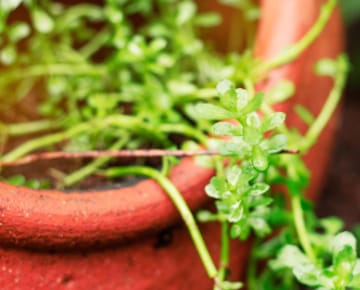November Gardening Advice and Tips
Tender plants need to be protected from frost, gales and freezing rains. Move plants into greenhouses, or into a sheltered spot, but if you can't, it is worth wrapping plants or pots. Winter is a tough time for birds so increase feeding and watering, make sure bird baths don't get frozen over.
Jobs For November
- Clear up fallen leaves from lawns and beds and create a leaf compost
- Raise containers onto pot feet to prevent water logging
- Plant out winter bedding
- Put out bird food to encourage winter birds into the garden
- Achilleas - Sow seeds
- Alliums - Separate allium bulbs
- Aucuba Japonica - buy and plant now, keep ground moist for first year.
- Bare Root Plants - Plant bare-root hedging, roses, trees and shrubs, before the weather turns really cold
- Borderline hardy plants - Protect plants that are borderline hardy, such as agapanthus, with a thick mulch of straw or garden compost
- Buddleia - Take hard wood cuttings, place themd directly into soil or into pots.
- Bulbs - plant spring flowering bulbs now
- Campanula Portenschlagiana - divide plant
- Catmint - divide older plants (the older the plant the less it will flower)
- Compost - (sandy soil) spread compost around the garden and dig in to help improve soil condition.
- Compost - spread compost around the base of plants and soil. Do not dig in. Mulch around salvias and penstemons
- Geraniums - Once geranium starts to die back, cut all the leaves and stems away so new growth gets sunlight
- Hellebores - can plant any time of the year if available in garden centres
- Japanese maple - Plant a Japanese maple in a pot and place in a sheltered spot in semi-shade
- Maples - Prune maples (from leaf fall but before January)
- Penstemons cut back faded foliage back by a third for winter
- Perennials - Cut down faded perennials that are looking tatty, then mulch the surrounding soil with garden compost
- Red valerian - once established - propagate it by division. This technique can revitalise old plants, stopping the root system from becoming congested. In autumn, when the flowers have faded, or in spring, when new shoots are just emerging, dig up the whole clump using a garden fork. Shake off any surplus soil and use a spade or gardening knife cut the rootball into several segments, each with its own roots and stems. Remove the woody centre of the plant. Pot up any segments you want to give to friends and replant the remaining divisions in separate planting holes about the same size as the rootball. Water in thoroughly to settle the soil around the roots.
- Seeds - Sow seeds from berry-laden trees and shrubs
- Seeds - start looking at websites for seeds you wish to buy for next year and start planning next years garden.
- Sunflowers - Pull up dead seedless sunflowers and put on compost
- Thyme - plant
- Tulips - Plant tulip bulbs in pots and borders, covering them with at least twice their depth of soil or compost
- Young Trees- Put stem protection guards around young trees and shrubs, if rabbits or deer are a problem
More articles about wildlife gardening:
1. How to attract birds to your garden
2. How to attract bees to your garden
3. Sowing and growing wildflowers


